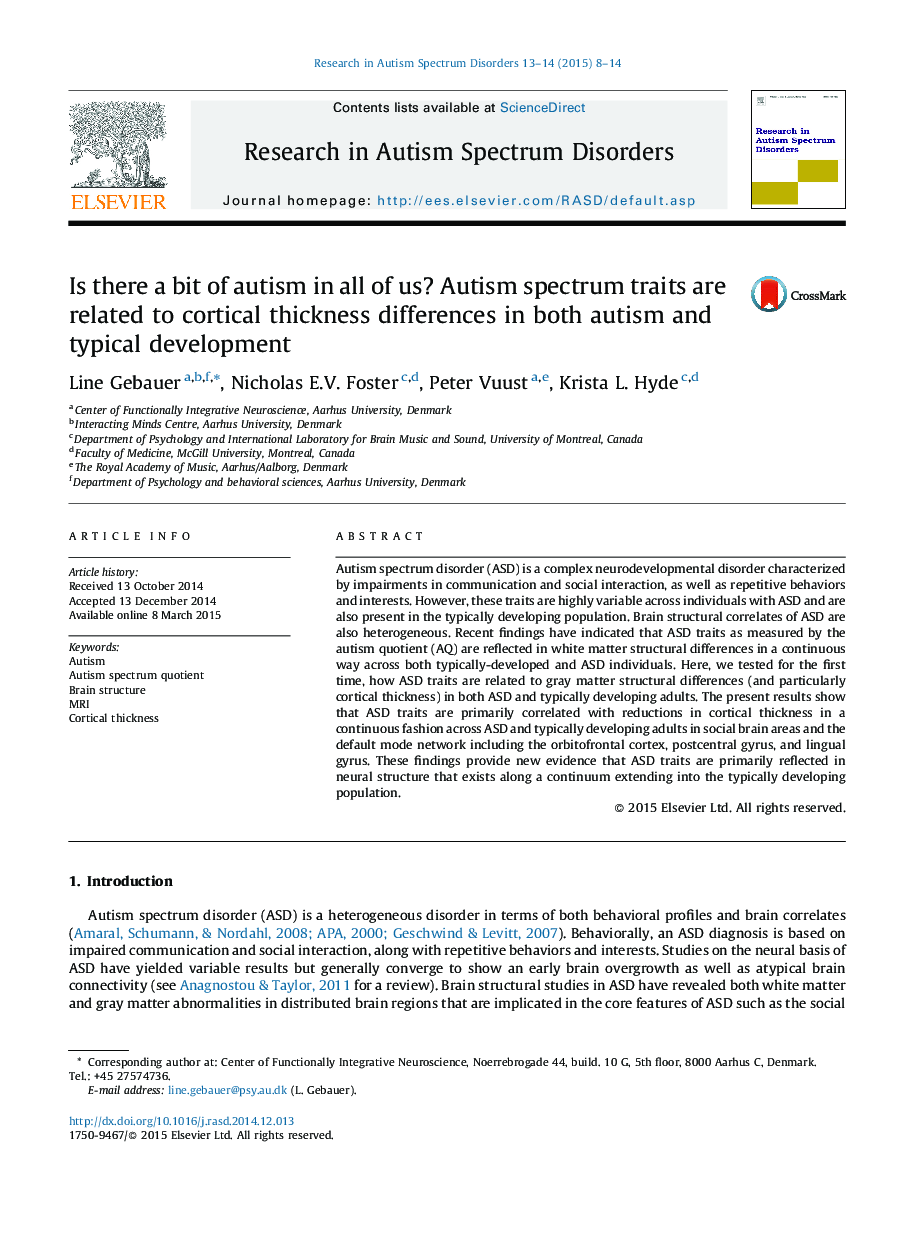| Article ID | Journal | Published Year | Pages | File Type |
|---|---|---|---|---|
| 370141 | Research in Autism Spectrum Disorders | 2015 | 7 Pages |
•ASD traits measured by the autism quotient (AQ).•ASD traits are related to cortical thickness differences.•ASD traits and cortical thickness show continuous correlations across ASD and TD.•Correlations were found in social brain areas and the default mode network.
Autism spectrum disorder (ASD) is a complex neurodevelopmental disorder characterized by impairments in communication and social interaction, as well as repetitive behaviors and interests. However, these traits are highly variable across individuals with ASD and are also present in the typically developing population. Brain structural correlates of ASD are also heterogeneous. Recent findings have indicated that ASD traits as measured by the autism quotient (AQ) are reflected in white matter structural differences in a continuous way across both typically-developed and ASD individuals. Here, we tested for the first time, how ASD traits are related to gray matter structural differences (and particularly cortical thickness) in both ASD and typically developing adults. The present results show that ASD traits are primarily correlated with reductions in cortical thickness in a continuous fashion across ASD and typically developing adults in social brain areas and the default mode network including the orbitofrontal cortex, postcentral gyrus, and lingual gyrus. These findings provide new evidence that ASD traits are primarily reflected in neural structure that exists along a continuum extending into the typically developing population.
